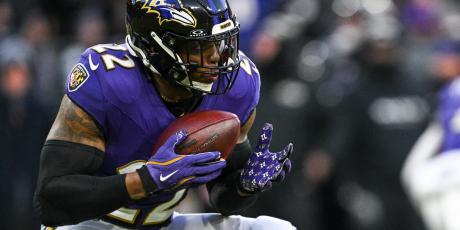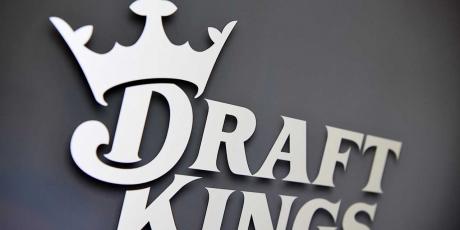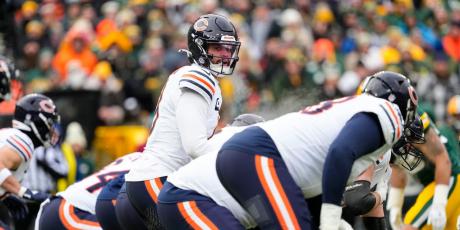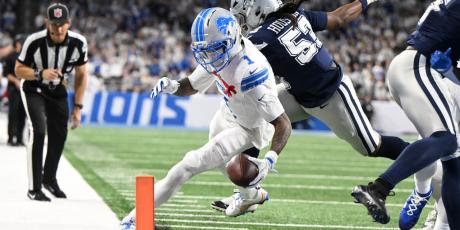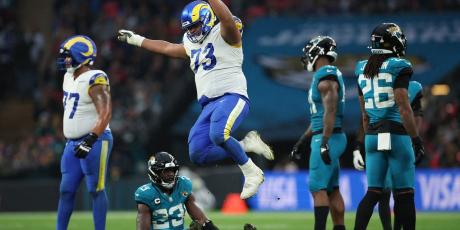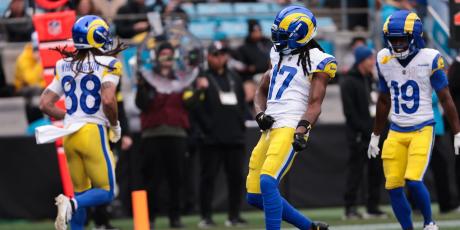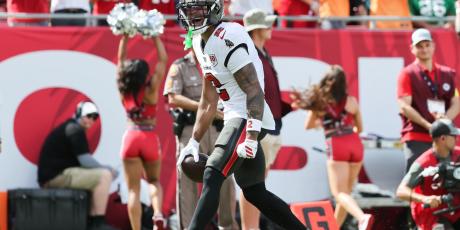How Hue Jackson Impacts the Browns' 2016 Fantasy Outlook

This offseason, I am digging through the histories of the five NFL play callers on new teams who have previous play calling experience,1 in hopes of discovering coaching tendencies that could have an immediate fantasy impact.
Hue Jackson, who has spent four years as an NFL play caller for two different teams, will be entering his first season as the head coach of the Cleveland Browns and will assume the duties as the offensive coordinator and primary play caller.
By focusing on Jackson’s past pass/run splits relative to the rest of the league, and on his touch and target splits, this exercise will focus on the parts of the game that are most heavily influenced by play calling.
To get a general idea of how every coaching staff could influence their respective offense in 2016, read Chris Raybon’s 3 Key Fantasy-Relevant Tendencies of Each NFL Offensive Coordinator.
A Snapshot of Jackson’s History
Jackson served as the offensive coordinator for Washington in 2003 and Atlanta in 2007 but deferred to Steve Spurrier (WAS) and Bobby Petrino (ATL) as the primary play callers.
| Year | Team | Pass % | Run % | League AVG Run % | Run % vs League Average |
|---|---|---|---|---|---|
| 2010 | Raiders | 51.5% | 48.5% | 43.1% | +5.4% |
| 2011 | Raiders | 54.1% | 45.9% | 42.9% | +3.0% |
| 2014 | Bengals | 51.7% | 48.3% | 41.8% | +6.6% |
| 2015 | Bengals | 53.5% | 46.5% | 40.9% | +5.6% |
| Year | Team | Attempts | Yards | TD |
|---|---|---|---|---|
| 2010 | Raiders | 4 | 2 | 2 |
| 2011 | Raiders | 7 | 7 | 7 |
| 2014 | Bengals | 5 | 6 | 2 |
| 2015 | Bengals | 7 | 13 | 4 |
| Year | Team | Attempts | Yards | TD |
|---|---|---|---|---|
| 2010 | Raiders | 24 | 23 | 25 |
| 2011 | Raiders | 22 | 11 | 18 |
| 2014 | Bengals | 25 | 21 | 22 |
| 2015 | Bengals | 26 | 15 | 11 |
Over the last 10 seasons, only three active play callers have averaged a higher percentage of run plays called than Jackson, and no coach has been more consistent in their pass/run splits over that span. Jackson has never led an offense that ranked lower than seventh in rush attempts and his team’s run percentage has, on average, been more than five percent above the league norm.
With such a run-heavy gameplan, passing volume has suffered with Jackson calling plays, but that hasn’t resulted in less efficient offenses, as Jackson has never had a team finish in the bottom half of the league in terms of percentage of drives ending in a score.
A position-by-position breakdown will offer some insight into how Jackson's play-calling tendencies translate into actionable fantasy information.
Quarterbacks
The following numbers reflect cumulative production of all quarterbacks.
| Completions | Attempts | Yards | TD | Int | FP | Comp % | TD Rate | AY/A |
|---|---|---|---|---|---|---|---|---|
| 18.4 | 29.3 | 226.7 | 1.35 | 0.92 | 15.6 | 62.8% | 4.6% | 7.2 |
| Year | Team | Completions | Attempts | Yards | TD | Int | FP | Comp % | TD Rate | AY/A |
|---|---|---|---|---|---|---|---|---|---|---|
| 2010 | Raiders | 17.4 | 30.6 | 216.9 | 1.13 | 1.00 | 14.3 | 56.9% | 3.7% | 6.3 |
| 2011 | Raiders | 19.6 | 32.6 | 255.3 | 1.19 | 1.44 | 15.4 | 60.3% | 3.6% | 6.6 |
| 2014 | Bengals | 20.0 | 31.3 | 217.0 | 1.19 | 1.06 | 14.9 | 64.0% | 3.8% | 6.2 |
| 2015 | Bengals | 20.9 | 31.6 | 256.5 | 1.94 | 0.56 | 19.7 | 66.1% | 6.1% | 8.6 |
Given the relatively low pass volume in a typical Jackson-led offense, it’s not surprising that his teams have finished in the top 12 in total quarterback fantasy points just once (2015). One thing that the volume doesn’t explain, though, is the general lack of quarterback efficiency under Jackson.
Prior to Andy Dalton’s spectacularly efficient 2015, the primary quarterback under Jackson has underwhelmed in terms of efficiency metrics. This is important to note, as touchdown rate and passing yards per game are almost as important as touchdowns when it comes to scoring fantasy points.
In his first three seasons as a play caller, Jackson’s starting quarterbacks posted a 3.95 percent touchdown rate and an average adjusted yards per attempt (AY/A) of 6.7 -- numbers that would have ranked 25th and 28th, respectively, in 2015. Things finally clicked for Jackson and his signal caller last season, as Dalton ranked in the top five of all quarterbacks in touchdown rate, AY/A, and fantasy points per attempt.
Running Backs
| Touches | Receptions | Total Yards | PPR FP | % of Team Touches |
|---|---|---|---|---|
| 30.6 | 5.3 | 163.3 | 27.8 | 61.6% |
| Year | Touches | Receptions | Total Yards | PPR FP | % of Team Touches |
|---|---|---|---|---|---|
| 2010 | 32.2 | 5.8 | 188.8 | 32.6 | 65.8% |
| 2011 | 30.9 | 5.6 | 171.4 | 28.1 | 63.4% |
| 2014 | 30.9 | 5.0 | 157.1 | 26.7 | 60.6% |
| 2015 | 28.4 | 4.6 | 135.8 | 23.5 | 56.8% |
| Touches | Receptions | Total Yards | PPR FP | % of RB Touches |
|---|---|---|---|---|
| 17.2 | 2.1 | 86.4 | 14.3 | 53.6% |
| Year | Player | Touches | Receptions | Total Yards | PPR FP | % of RB Touches |
|---|---|---|---|---|---|---|
| 2010 | Darren McFadden | 20.8 | 3.6 | 128.0 | 20.7 | 52.4% |
| 2011 | Michael Bush | 18.3 | 2.3 | 87.2 | 14.0 | 59.2% |
| 2014 | Jeremy Hill | 15.6 | 1.7 | 83.7 | 13.1 | 50.4% |
| 2015 | Jeremy Hill | 14.9 | 0.9 | 54.6 | 10.7 | 52.3% |
As mentioned earlier, Jackson has been one of the most run-heavy play callers in recent history, and that has resulted in a large percentage of his team's touches going to his running backs. Over Jackson's four years as a play caller, running backs have accounted for over 61 percent of his team's touches, a touch share that would have ranked fifth among backfields in 2015. However, that touch share has waned over Jackson’s career as a play caller, and last season his offense ranked just 16th in percentage of team touches by running backs.
One thing that hasn’t changed for Jackson is how he distributes his running back touches. No running back has ever accounted for 60 percent or more of the backfield touches in a Jackson offense, and the average touch share for a lead back under Jackson would have ranked 14th among running backs last season.
In Oakland, Jackson managed backfields where the running backs split time proportionally, both in the rushing and passing games. Cincinnati's backs had much more defined roles under Jackson. In the last two seasons, Jeremy Hill has accounted for 56 percent of the Bengals backfield rush attempts and 27 percent of running back receptions, while Giovani Bernard has seen 41 percent of the rushes but 66 percent of the catches.
Jackson seems willing to give running backs multiple roles if they possess the proper skill set, but regardless of their versatility, history shows that Jackson is sure to rotate his backs in some manner.
Wide Receivers
| Targets | Receptions | Rec Yards | Rec TD | PPR FP | % of Team Targets |
|---|---|---|---|---|---|
| 7.6 | 4.5 | 67.6 | 0.38 | 13.5 | 22.1% |
| Year | Player | Targets | Receptions | Rec Yards | Rec TD | PPR FP | % of Team Targets |
|---|---|---|---|---|---|---|---|
| 2010 | Louis Murphy | 5.6 | 2.9 | 43.5 | 0.14 | 8.3 | 16.1% |
| 2011 | Darrius Heyward-Bey | 7.7 | 4.3 | 65.0 | 0.27 | 12.3 | 22.2% |
| 2014 | A.J. Green | 9.0 | 5.3 | 80.1 | 0.46 | 15.9 | 23.7% |
| 2015 | A.J. Green | 8.3 | 5.4 | 81.1 | 0.63 | 17.2 | 26.7% |
| Targets | Receptions | Rec Yards | Rec TD | PPR FP | % of Team Targets |
|---|---|---|---|---|---|
| 5.7 | 3.0 | 43.2 | 0.25 | 9.2 | 17.2% |
| Year | Player | Targets | Receptions | Rec Yards | Rec TD | PPR FP | % of Team Targets |
| 2010 | Darrius Heyward-Bey | 4.3 | 1.7 | 24.4 | 0.07 | 4.8 | 13.4% |
| 2011 | Denarius Moore | 5.8 | 2.5 | 47.5 | 0.38 | 10.5 | 14.6% |
| 2014 | Mohamed Sanu | 6.1 | 3.5 | 49.4 | 0.31 | 10.6 | 19.8% |
| 2015 | Marvin Jones | 6.4 | 4.1 | 51.0 | 0.25 | 10.9 | 20.8% |
On average, Jackson’s primary wide receiver has seen a target share that would have matched Doug Baldwin’s target market share in 2015, which ranked just 17th among wideouts, although that number has fluctuated depending on the situation. If Jackson has a dominant number one that is healthy for the entire season (like he did in 2015), that receiver will get plenty of opportunity -- A.J. Green ranked eighth in target share last season. When primary receiver isn’t as clear-cut, such as in 2010 when no receiver in Oakland had a target share that would have broken into 2015’s top 40, Jackson has shown that he has no problem with his offense spreading the targets around.
The usage for Jackson’s number two wide receiver has increased over the years, but so has the talent level of that second option. When Jackson had Marvin Jones healthy for a full season, Jones saw a target share that ranked 20th among all receivers. But without a talented number two receiver, Jackson has been willing to allocate those targets elsewhere, namely to his tight end.
Tight Ends
| Targets | Receptions | Rec Yards | Rec TD | PPR FP | % of Team Targets |
|---|---|---|---|---|---|
| 5.0 | 3.5 | 37.3 | 0.46 | 9.9 | 16.1% |
| Year | Player | Targets | Receptions | Rec Yards | Rec TD | PPR FP | % of Team Targets |
|---|---|---|---|---|---|---|---|
| 2010 | Zach Miller* | 6.1 | 4.0 | 45.7 | 0.33 | 10.5 | 20.2% |
| 2011 | Kevin Boss | 2.9 | 2.0 | 26.3 | 0.21 | 5.9 | 8.8% |
| 2014 | Jermaine Gresham | 5.3 | 4.1 | 30.7 | 0.33 | 9.0 | 17.1% |
| 2015 | Tyler Eifert* | 5.7 | 4.0 | 47.3 | 1.00 | 14.7 | 18.4% |
Despite having four different starting tight ends in four seasons as a play caller, Jackson has given his tight ends a target share that would have ranked in the top 10 in 2015 in three of those seasons. In each of those seasons, the primary tight end accounted for at least 22 percent of their team's red zone targets. Not only are those red zone targets especially valuable for tight ends, but they’re also hard to find.
What It Means for 2016
It’s probably not by mistake that Jackson accepted the job as the Browns’ head coach, as there may not be an offensive roster in the league that better aligns with Jackson’s past. Given the familiar roster makeup, Jackson should make his impact felt immediately.
Jackson’s calling card has been his heavy running back usage, split between two main backs. He’ll likely bring that blueprint to Cleveland with Isaiah Crowell and Duke Johnson. Although they are are likely to split backfield touches, the player to target in fantasy drafts -- especially in PPR leagues -- is Johnson. Jackson showed in Cincinnati that he prefers defined roles for his backs, and the framework for the primary rusher versus the pass catching back was already put in place last season in Cleveland.
In 2015, Crowell accounted for over 60 percent of the Browns’ running back rush attempts, while Johnson saw almost 75 percent of the backfield receptions. Based on Vegas’ current projection of just 4.5 wins for the Browns, the lowest projected win total in the league, game flow could dictate increased snaps for Johnson in 2016, and Jackson tends to respect game flow splits. If Johnson eats into even a fraction of Crowell’s carries, Duke could easily finish as a top-20 PPR back.
Throwing those targets to Johnson in 2016 will likely be Robert Griffin III, who hasn’t played in an NFL game since December 2014. Throughout his career, Griffin III has been relatively inefficient as a passer. His 3.8 percent career touchdown rate would have ranked 25th in the league last season and his 7.4 career AY/A would have barely broken the top 15.
Much of RG3’s fantasy success has been predicated on his ability to run, but in 2014 he averaged under 20 rushing yards per game, a mark that 10 quarterbacks were able to reach last season. If Griffin is under center, Jackson will likely be even more inclined to implement his run-heavy gameplan, which will result in less of a chance at fantasy success for his pass catchers.
Cleveland’s receiving corps is made up of first-round pick Corey Coleman and a group of players that are complementary assets at best. If any receiver emerges as a relevant redraft option, it will surely be Coleman, who compares closest to Odell Beckham, in terms of physical traits. Matching Beckham’s rookie season is outside of Coleman’s likely range of outcomes (especially given the quarterbacks on Cleveland's roster), but there are over 200 vacated targets in this offense and RG3 loves big play, downfield threats, as evidenced by his 11.4 career AY/A to DeSean Jackson.
If Coleman takes some time to develop, as many young wide receivers do, Jackson’s history suggests that he'll be willing to bring the young receiver along slowly, even if the team has invested high draft capital. In 2010, Darrius Heyward-Bey accounted for just 13 percent of Oakland’s targets under Jackson, despite being drafted with the seventh overall pick a year prior. After a year of experience in Jackson's system, DHB saw his target share climb to 22 percent.
Depending on his price, Coleman would probably be best as a WR4/5 in fantasy drafts. While Coleman could prove to be a league winner, his range of outcomes is wide. Relying on Coleman as an every-week WR2/3 without insurance could be frustrating and potentially disastrous.
The pass catcher in with the safest role in the Browns offense is Gary Barnidge. Even when Jackson's number two wide receiver has seen a large share of targets, Jackson has made sure to get his tight end involved whenever possible. Barnidge ranked second among all tight ends in targets last season and was one of just five tight ends with at least a 20 percent target share. Regardless of how run-heavy Cleveland is in 2016, the target share that Jackson offers his tight ends should keep Barnidge well within the TE1 ranks.
Ultimately, game flow could alter Jackson’s run-heavy gameplan in 2016, but it will be difficult for Cleveland to be in as many must-pass situations as they were in last season. In 2015, the Browns ran 552 offensive plays when trailing by a touchdown or more, by far the most in the league, which led to them being the seventh most pass-heavy team. A lot of their inability to keep up with teams can be attributed to their offensive inefficiency. Cleveland ranked 19th or worse in yards per drive, points per drive, and scoring percentage.
In both of his stops as a play caller, Jackson’s teams have improved in all three aforementioned efficiency categories, and with a familiar team makeup, Jackson should ultimately be a positive influence on the Browns’ offense in 2016.
Editor's Note: Don't miss out on early bird rates for 4for4's Premium and DFS Subscriptions.
Footnotes
1. Ten teams will have new full-time play callers in 2016, but five of those coaches have never called plays for an entire season in the NFL.

